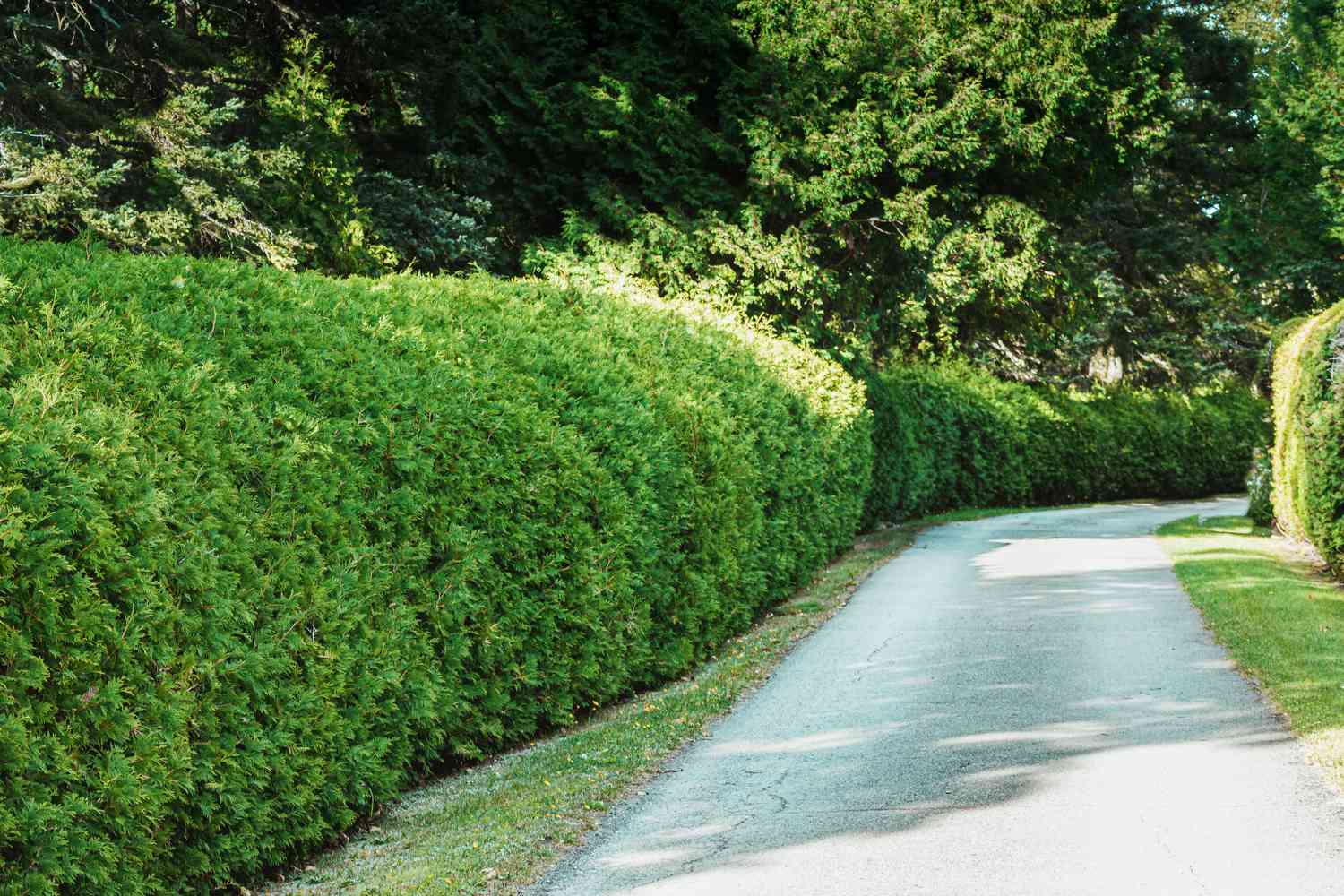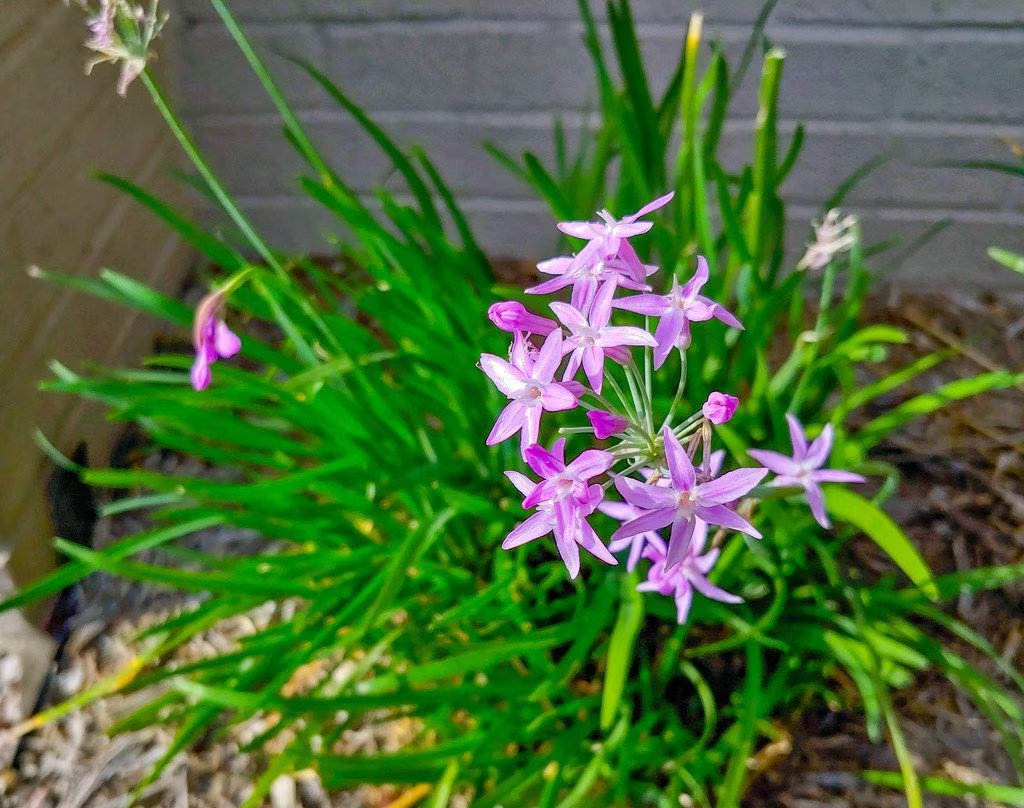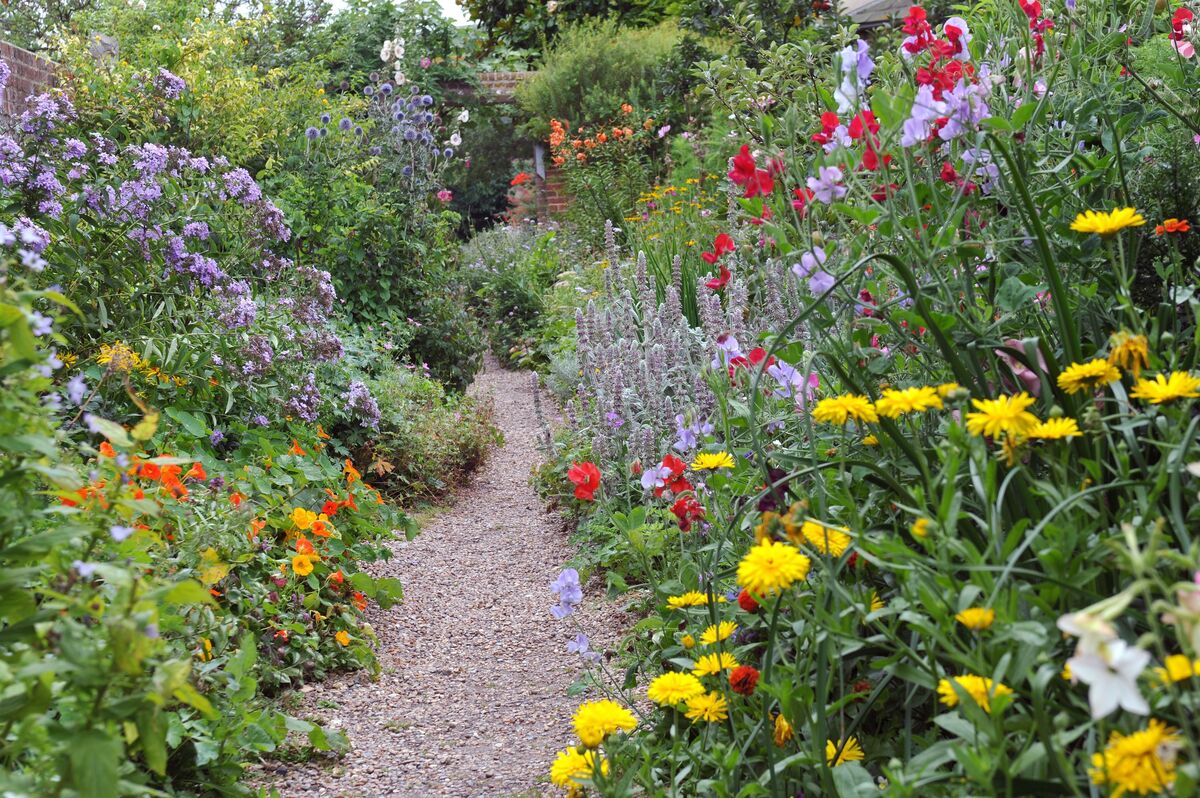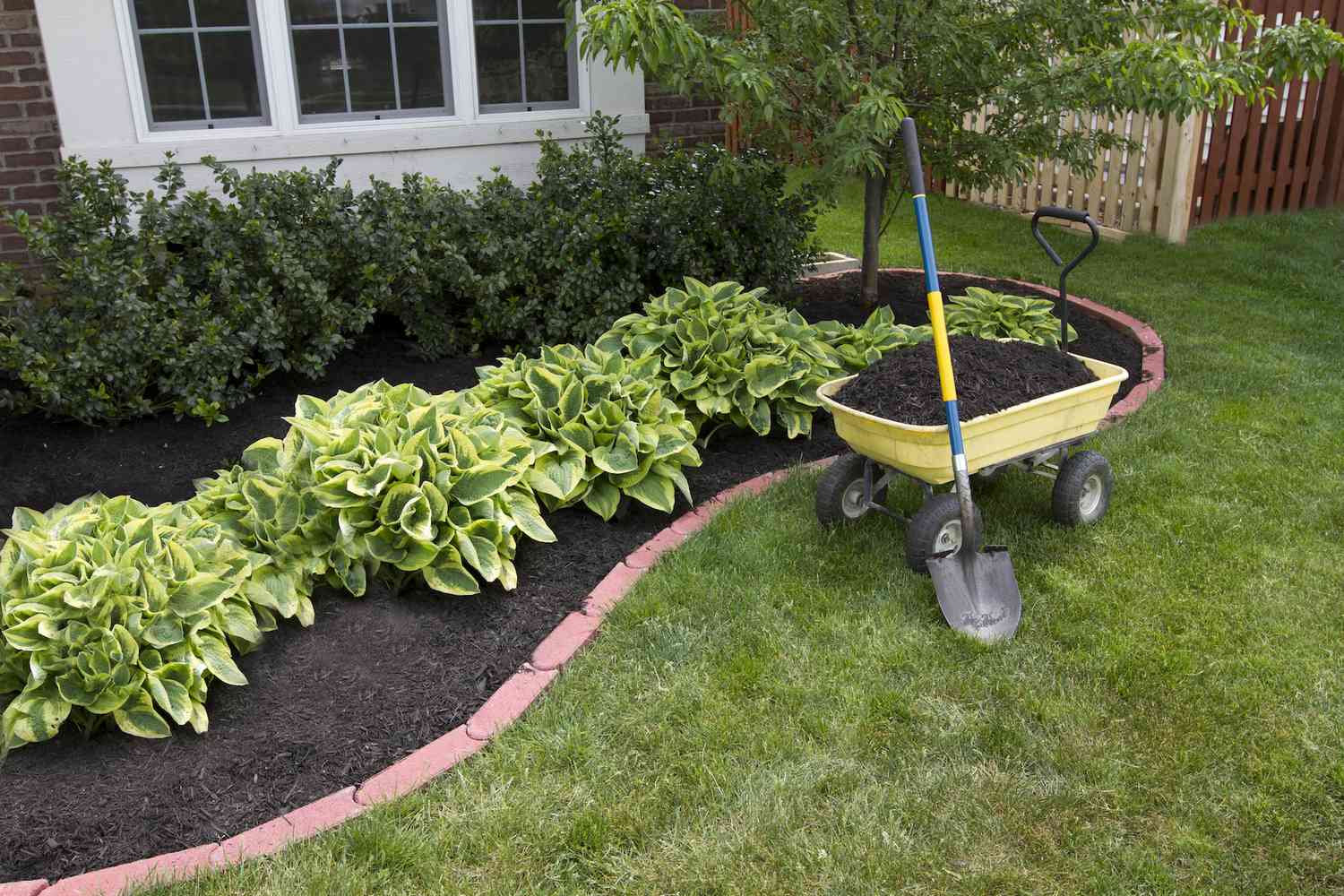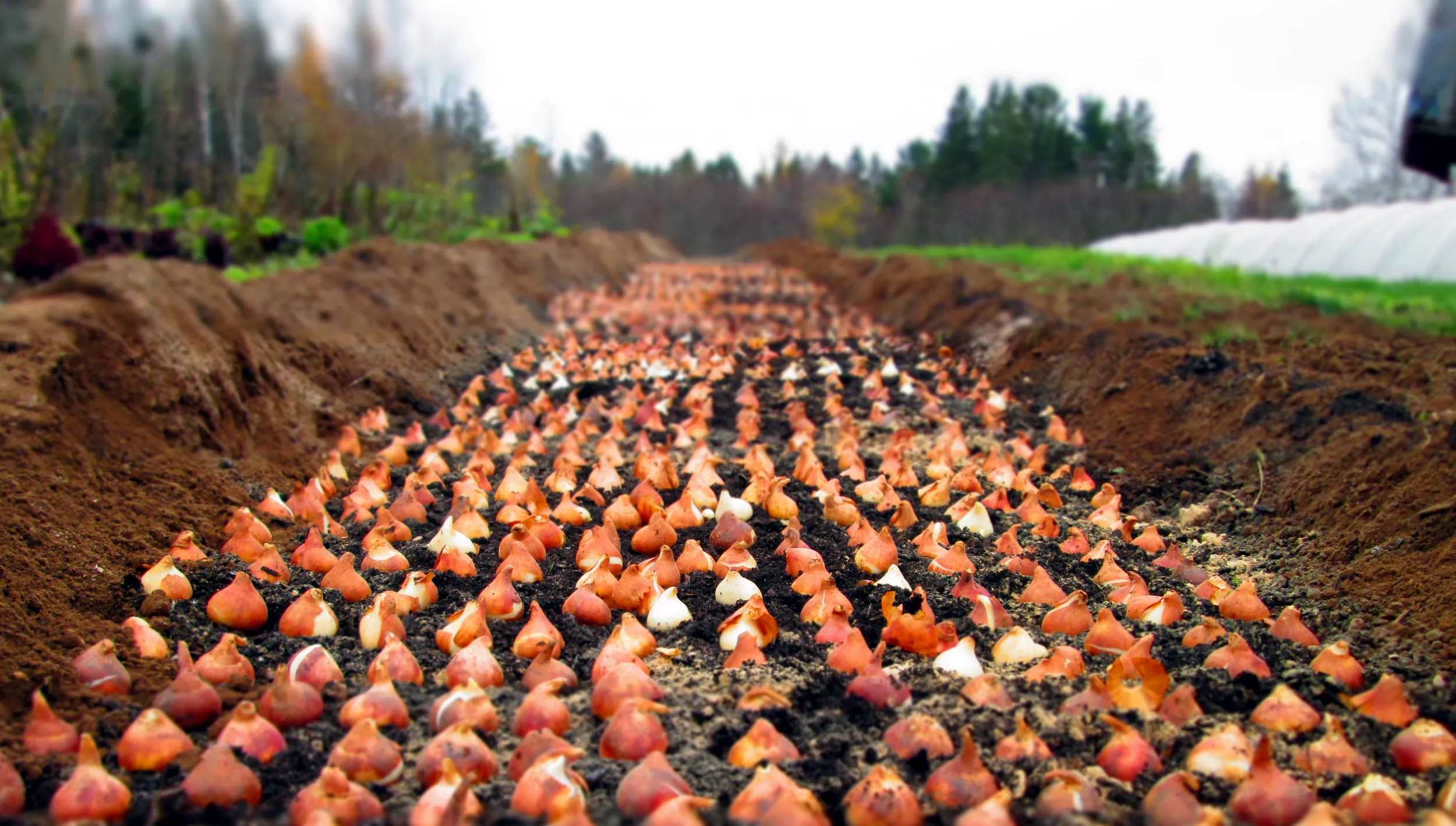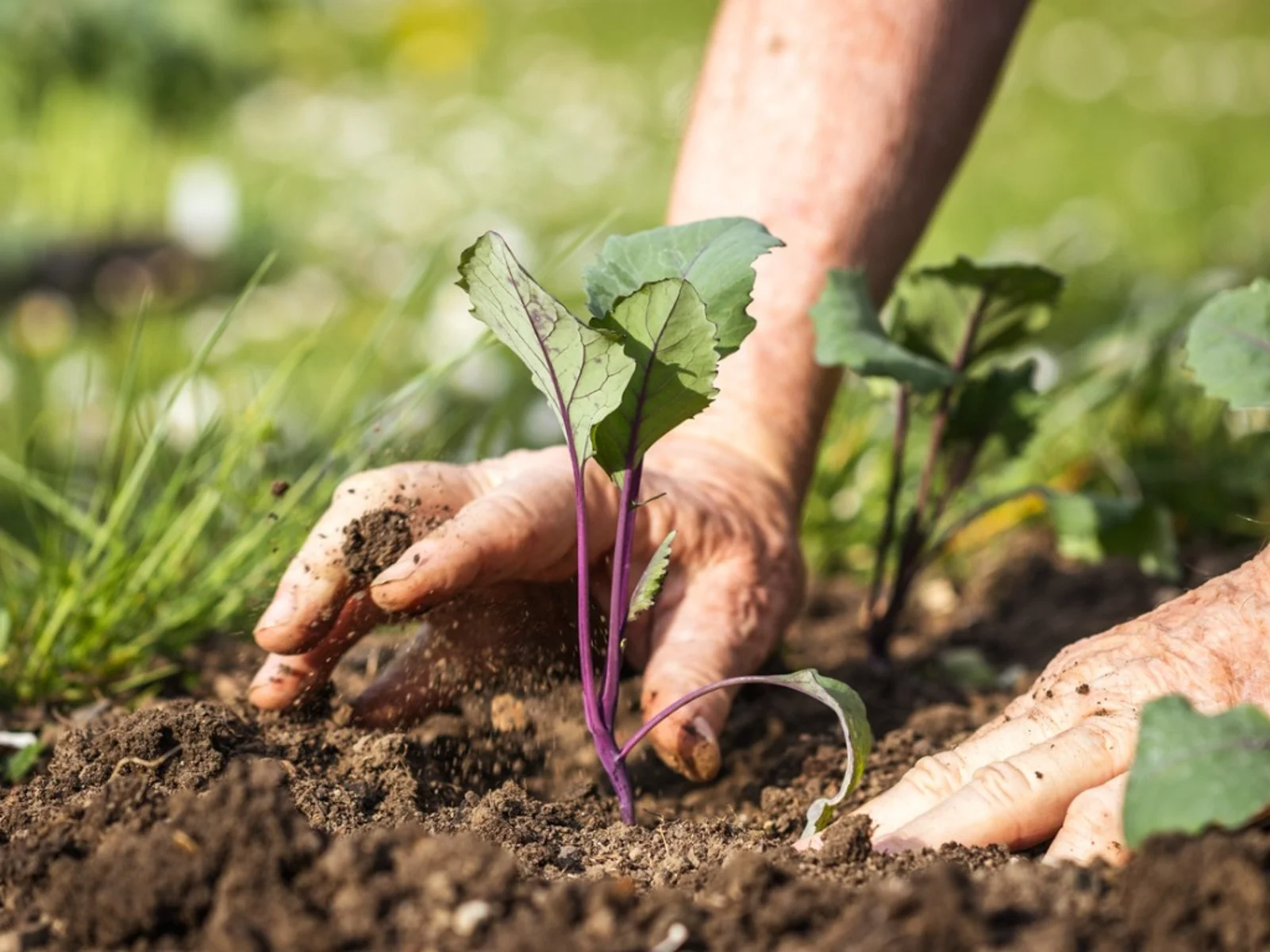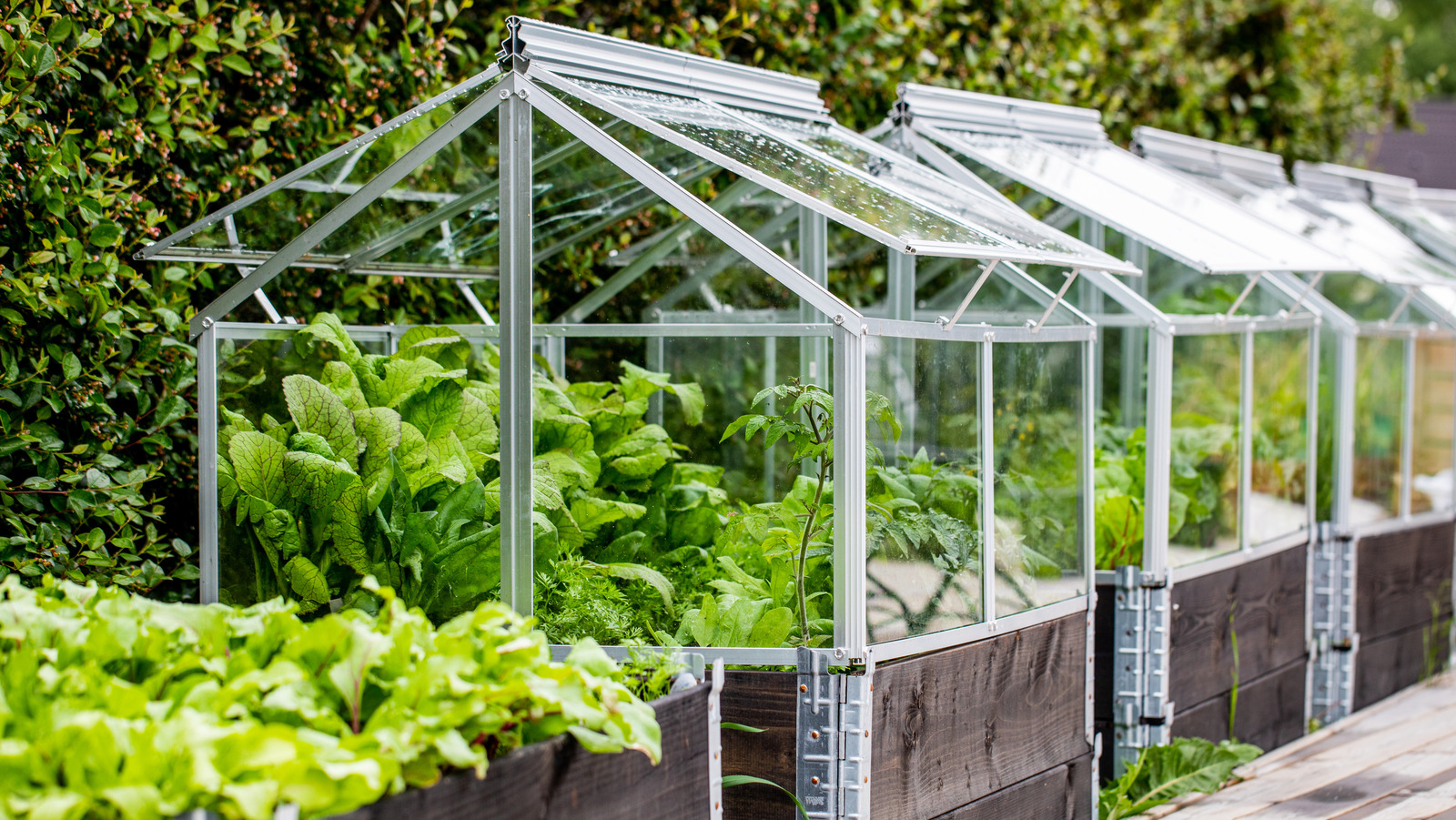Home>Gardening Techniques>Seasonal Gardening>What Shrubs Can Be Planted In The Fall
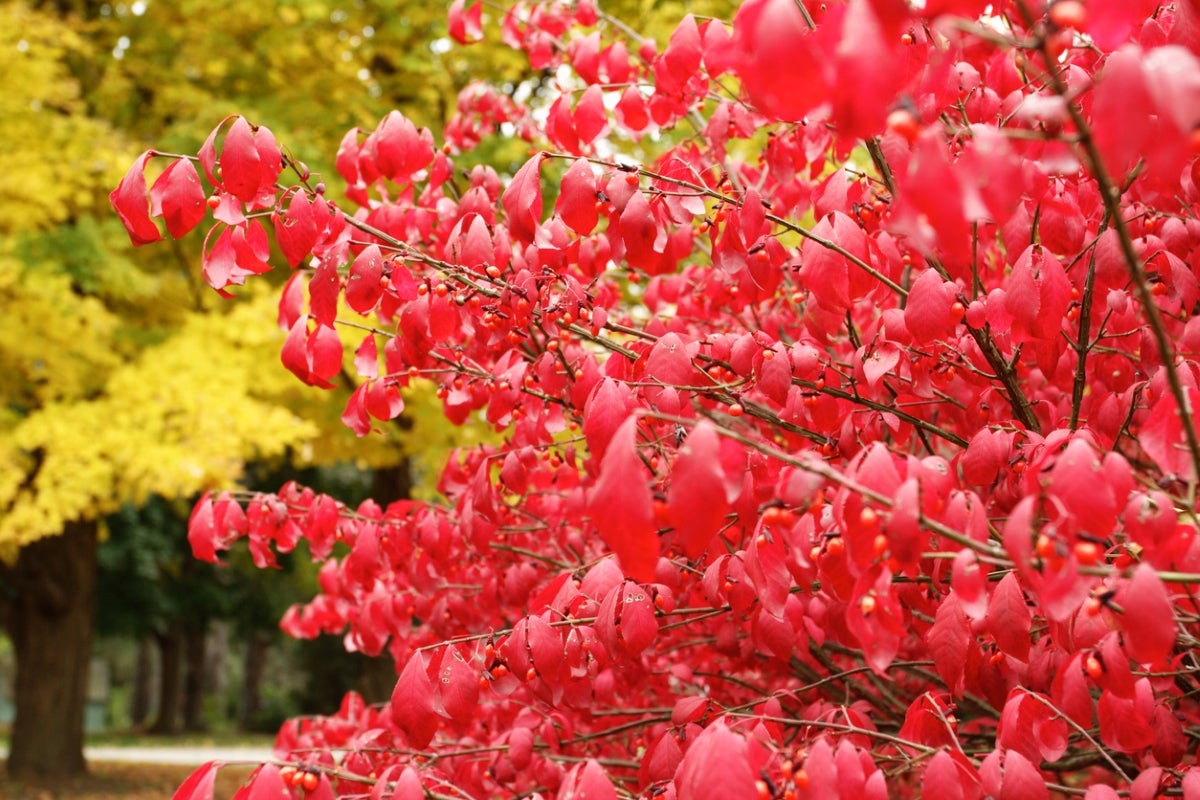

Seasonal Gardening
What Shrubs Can Be Planted In The Fall
Modified: January 22, 2024
Discover the best shrubs to plant in the fall for your seasonal gardening needs. Enhance your garden with stunning foliage and vibrant colors.
(Many of the links in this article redirect to a specific reviewed product. Your purchase of these products through affiliate links helps to generate commission for Chicagolandgardening.com, at no extra cost. Learn more)
Table of Contents
- Introduction
- Benefits of Planting Shrubs in the Fall
- Factors to Consider When Choosing Shrubs for Fall Planting
- Cold Hardy Shrubs for Fall Planting
- Evergreen Shrubs for Fall Planting
- Flowering Shrubs for Fall Planting
- Native Shrubs for Fall Planting
- Tips for Planting Shrubs in the Fall
- Caring for Newly Planted Fall Shrubs
- Conclusion
Introduction
Welcome to the world of seasonal gardening! If you have a passion for gardening and want to make the most of your outdoor space, planting shrubs in the fall is a fantastic option. Fall, with its cool temperatures and ample rainfall, offers ideal conditions for establishing and nurturing shrubs. Whether you’re a seasoned gardener or a beginner, fall planting can bring a burst of color and life to your landscape.
Shrubs are woody plants that add structure, texture, and visual interest to any garden or backyard. Whether you’re looking for a privacy screen, a focal point, or simply want to enhance the overall beauty of your yard, there is a wide range of shrubs to choose from.
In this article, we will explore the benefits of planting shrubs in the fall and provide you with valuable insights into the factors to consider when selecting shrubs for fall planting. We’ll also highlight some cold-hardy, evergreen, flowering, and native shrubs that thrive when planted in the fall. Additionally, we’ll share essential tips for successful planting and offer guidance on caring for newly planted fall shrubs.
Whether you’re aiming to create a vibrant autumn landscape or looking to establish a foundation for a spectacular spring bloom, fall planting of shrubs is a smart and strategic choice. So grab your gardening gear and get ready to discover the wonderful world of fall shrub planting!
Benefits of Planting Shrubs in the Fall
Planting shrubs in the fall offers numerous advantages and is considered a prime time for establishing these hardy plants in your garden. Here are some key benefits of fall planting:
- Root establishment: When shrubs are planted in the fall, they have ample time to establish strong root systems before the harshness of winter sets in. The cool temperatures and moist soil create optimal conditions for root development, allowing the shrub to anchor itself securely.
- Reduced stress: Cooler temperatures in the fall reduce the stress on newly planted shrubs compared to planting in the heat of summer. This increased resilience gives the shrubs a better chance of survival and encourages healthy growth in the following spring.
- Less watering: Fall planting allows shrubs to take advantage of natural rainfall. As the temperatures cool, evaporation rates decrease, meaning less watering is required compared to planting in the hot summer months. This not only saves water but also reduces the maintenance needed to keep the shrubs hydrated.
- Pest and disease control: Insects and diseases are often less active in the fall. By planting shrubs during this time, you minimize the risk of infestations and diseases that can harm your plants. Additionally, fall planting allows the shrubs to establish stronger immune systems to resist pests and diseases when they become active in the following seasons.
- Longer growing season: By planting in the fall, shrubs have a head start and can take advantage of the mild temperatures and moisture in the soil. This extended growing season allows the plants to develop stronger root systems and foliage, resulting in healthier and more vigorous growth come springtime.
These are just a few of the many benefits of fall planting. By taking advantage of the unique conditions that fall offers, you can give your shrubs the best chance to thrive and create a stunning landscape that will be the envy of your neighbors.
Factors to Consider When Choosing Shrubs for Fall Planting
When selecting shrubs for fall planting, it’s important to consider a few key factors to ensure their success and longevity in your garden. Here are some factors to keep in mind:
- Hardiness zone: Check your hardiness zone to determine the suitable shrubs for your region. Different shrubs have different temperature tolerances, so it’s essential to choose ones that can withstand the winter temperatures in your area.
- Sunlight requirements: Evaluate the sunlight conditions in your garden. Some shrubs thrive in full sun, while others prefer partial shade. Make sure to choose shrubs that align with the sunlight availability in your garden.
- Soil type and drainage: Consider the soil type and drainage in your garden. Some shrubs prefer well-draining soil, while others can tolerate heavier or clay soils. Understanding your soil conditions will help you select shrubs that will thrive in your specific environment.
- Mature size: Consider the mature size of the shrubs you plan to plant. Make sure you have enough space to accommodate their growth without overcrowding your garden. Be mindful of their height, width, and spread when choosing the right shrubs.
- Seasonal interest: Think about the visual appeal you want to achieve throughout the year. Some shrubs provide beautiful blooms in the spring or summer, while others offer vibrant fall foliage or interesting bark textures during the winter months. Choose shrubs that will provide year-round interest and complement the overall aesthetic of your garden.
- Maintenance requirements: Assess the amount of time and effort you are willing to invest in the maintenance of your shrubs. Some shrubs require regular pruning, fertilizing, or other upkeep tasks. Consider your available time and commitment when selecting shrubs that align with your maintenance capabilities.
By considering these factors, you can choose shrubs that are well-suited to your garden’s specific conditions and your preferences. This thoughtful selection process will increase the chances of success and ensure that your fall-planted shrubs thrive for years to come.
Cold Hardy Shrubs for Fall Planting
One of the key considerations for fall planting is choosing shrubs that are cold hardy. These shrubs are able to withstand the harsh winter temperatures and continue to thrive when planted in the fall. Here are some cold hardy shrubs that are perfect for fall planting:
- Witch Hazel (Hamamelis): This deciduous shrub boasts vibrant, spidery flowers that bloom in late fall or winter. It’s cold hardy and can tolerate a variety of soil types.
- Boxwood (Buxus): Known for its dense foliage and ability to be pruned into various shapes, boxwood is an excellent choice for fall planting. It is highly adaptable and can withstand freezing temperatures.
- Spirea (Spiraea): With its cascading clusters of flowers, spirea adds beauty to any landscape. It’s cold hardy and can tolerate a wide range of soil conditions.
- Winterberry (Ilex verticillata): This native shrub is highly prized for its stunning display of bright red berries that persist throughout the winter. It thrives in wet soils and is a favorite among birds.
- Juniper (Juniperus): Junipers are durable evergreen shrubs that come in various shapes and sizes. They are cold hardy and provide year-round interest with their foliage and berries.
- Forsythia (Forsythia): Forsythia is known for its early spring golden yellow blooms, signaling the arrival of warmer weather. It tolerates cold temperatures and is relatively low maintenance.
These are just a few examples of cold hardy shrubs that thrive when planted in the fall. When selecting shrubs for your cold climate, look for those specifically labeled as cold hardy and suitable for your hardiness zone. This ensures that the shrubs will withstand the freezing temperatures and flourish in your garden.
Evergreen Shrubs for Fall Planting
Evergreen shrubs provide year-round beauty and structure to your garden, maintaining their foliage and color even during the winter months. If you’re looking to add some greenery and vibrancy to your landscape through fall planting, consider these evergreen shrubs:
- Boxwood (Buxus): Boxwood is a classic choice for evergreen shrubs. With its dense foliage and versatility in pruning, it adds a touch of elegance to any garden.
- Yew (Taxus): Yews are resilient evergreen shrubs that can thrive in various climates. They offer a variety of compact and upright options, perfect for hedges or as accent plants.
- Arborvitae (Thuja): Arborvitae is a popular choice for creating privacy screens or windbreaks. They have a columnar or pyramidal shape, providing a unique architectural element to your garden.
- Rhododendron (Rhododendron): Known for their showy blooms in the spring, rhododendrons also maintain their glossy, dark green foliage throughout the year. They prefer slightly acidic soil and dappled shade.
- Holly (Ilex): Hollies are versatile evergreen shrubs that come in various sizes and shapes. They are known for their red berries, adding a pop of color to the winter landscape.
- Camellia (Camellia): Camellias are prized for their stunning winter blooms. Their glossy green foliage and exquisite flowers make them a beautiful addition to any garden.
When selecting evergreen shrubs for fall planting, consider the specific sunlight and moisture requirements of each variety. Some shrubs may prefer partial shade, while others thrive in full sun. Additionally, ensure that the soil conditions in your garden are suitable for the chosen shrubs.
By incorporating evergreen shrubs into your fall planting, you can create a lush and visually appealing landscape that remains vibrant and colorful even when other plants go dormant for the winter.
Flowering Shrubs for Fall Planting
When it comes to fall planting, flowering shrubs can bring a burst of color and beauty to your garden, extending the blooming season well into the autumn months. If you want to showcase vibrant blossoms as part of your fall landscape, consider these flowering shrubs:
- Burning Bush (Euonymus alatus): With its fiery red foliage in the fall, the burning bush is a showstopper. It produces inconspicuous flowers in the spring but truly captivates with its intense fall color.
- Chrysanthemum (Chrysanthemum): Chrysanthemums are quintessential fall flowers, and many varieties are available as shrubs. They offer a wide range of colors, shapes, and sizes, adding vibrancy and flair to your garden.
- Beautyberry (Callicarpa): Beautyberries are known for their clusters of bright purple berries that adorn the branches in the fall. The berries provide a striking contrast against the shrub’s green foliage.
- Panicle Hydrangea (Hydrangea paniculata): This hydrangea variety bears large panicles of white, pink, or red flowers that persist well into the fall. The blooms age gracefully, often developing shades of pink and burgundy.
- Butterfly Bush (Buddleja): The butterfly bush lives up to its name by attracting an array of colorful butterflies and pollinators. It produces fragrant clusters of flowers in shades of purple, pink, white, and more.
- Winter Jasmine (Jasminum nudiflorum): Winter jasmine stands out with its bright yellow blooms that appear on bare stems in late winter and early spring. Its early flowering makes it a great addition for fall planting.
When choosing flowering shrubs for fall planting, consider factors such as the required sunlight, soil conditions, and your hardiness zone. It’s essential to select shrubs that will thrive in your specific garden environment.
By incorporating these flowering shrubs into your fall landscape, you can enjoy a burst of vibrant colors and create a visually stunning garden that continues to impress well into the autumn season.
Native Shrubs for Fall Planting
Choosing native shrubs for fall planting not only adds beauty to your landscape but also offers numerous ecological benefits. Native plants are adapted to the local environment, making them resilient and well-suited to the climate and soil conditions of your area. Here are some native shrubs that thrive when planted in the fall:
- Serviceberry (Amelanchier): Also known as Juneberry, serviceberry produces delicate white flowers in the spring, followed by edible berries in the summer. Its vibrant fall foliage ranges from yellow to orange and red.
- Redtwig Dogwood (Cornus sericea): This native shrub stands out with its bright red stems, which provide striking visual interest during the winter months. It also produces clusters of white flowers in the spring.
- Winterberry (Ilex verticillata): A standout choice for fall planting, winterberry dazzles with its bright red berries that persist into the winter. It provides food and shelter for birds, making it an excellent choice for wildlife enthusiasts.
- Bayberry (Myrica pensylvanica): Bayberry is a tough shrub that is highly adaptable to a range of soil types. It offers fragrant grayish-green foliage and produces waxy berries that are favored by birds.
- Blueberry (Vaccinium): Blueberries not only provide delicious fruits but also display beautiful white or pink blooms in the spring. They thrive in acidic soil and are fantastic for attracting pollinators.
- Virginia Sweetspire (Itea virginica): This native shrub offers beautiful white, fragrant flower spikes in the summer. It also provides stunning fall foliage in shades of yellow, orange, and red.
Choosing native shrubs for your fall planting not only helps to support local ecosystems and wildlife but also tends to require less maintenance and watering. They have evolved to thrive in your region, making them well-adapted to the specific climate and soil conditions.
By incorporating these native shrubs into your fall landscape, you can create a beautiful and sustainable garden that celebrates the local flora and fauna.
Tips for Planting Shrubs in the Fall
Planting shrubs in the fall can be an exciting and rewarding experience. To ensure the success of your fall planting, here are some tips to keep in mind:
- Timing: Start planting shrubs in the early fall, allowing them enough time to establish their root systems before the ground freezes.
- Soil Preparation: Prepare the soil by removing any weeds, rocks, or debris. Loosen the soil and amend it with organic matter to improve drainage and provide nutrients.
- Digging the Hole: Dig a hole that is wider and slightly shallower than the root ball. This will encourage root growth outward into the surrounding soil.
- Root Trimming: If the shrub has circling or tangled roots, gently tease them apart or trim them slightly before planting. This helps promote healthy root growth.
- Planting Depth: Position the shrub in the hole, making sure the top of the root ball is level with or slightly above the soil surface. Avoid planting too deep, as it can cause root rot.
- Backfilling: Fill the hole with the amended soil, firming it gently around the roots to remove any air pockets. Ensure the shrub is stable and upright.
- Watering: After planting, water the shrub thoroughly to settle the soil and provide moisture. Continue watering regularly until the ground freezes.
- Mulching: Apply a layer of mulch around the base of the shrub, leaving a small gap around the stem. Mulch helps retain moisture, regulate soil temperature, and suppress weeds.
- Protection: Consider using a burlap screen or windbreak to protect newly planted shrubs from strong winds and harsh weather conditions.
- Monitoring: Keep an eye on your newly planted shrubs and check for signs of pests, diseases, or any issues with watering. Address any problems promptly to ensure the health of the shrubs.
By following these tips, you can improve the chances of successful establishment and growth for your fall-planted shrubs. Remember to provide regular care and maintenance to help them thrive and create a beautiful, flourishing garden.
Caring for Newly Planted Fall Shrubs
Caring for newly planted fall shrubs is crucial to ensure their healthy establishment and long-term growth. Here are some essential care tips to follow after planting your fall shrubs:
- Watering: Keep the soil consistently moist during the first year after planting. Water deeply and regularly, especially during dry spells. Be careful not to overwater, as excessive moisture can lead to root rot.
- Mulching: Maintain a layer of mulch around the base of the shrubs. Mulch helps retain moisture, regulate soil temperature, and minimize weed growth. Keep the mulch a few inches away from the stem to prevent rotting.
- Pruning: Limit pruning to removing damaged or dead branches. Avoid heavy pruning or shaping during the first year to allow the shrub to focus on root development.
- Fertilizing: Avoid applying fertilizer directly after planting. Wait until the following spring before applying a slow-release, balanced fertilizer to provide nutrients to the shrub.
- Protection: Protect your fall shrubs from extreme temperature fluctuations by using burlap or other protective materials. This is particularly important for cold-sensitive shrubs.
- Weed Control: Regularly monitor and remove weeds around the shrubs. Weeds compete for nutrients and water, inhibiting the growth of newly planted shrubs.
- Monitoring: Keep an eye out for any signs of pests, diseases, or stress on the shrubs. Early detection and intervention can prevent potential issues from becoming severe.
- Winter Care: Before winter sets in, ensure the shrubs are properly hydrated. Watering deeply before the ground freezes helps protect the roots. Provide additional insulation by adding a layer of mulch around the base of the shrubs.
- Patience: It’s important to remember that newly planted fall shrubs may need time to acclimate and establish their root systems. Be patient and allow them to gradually adapt to their new environment.
By providing proper care and attention to your newly planted fall shrubs, you give them the best chance to thrive and flourish in your garden. With time and care, these shrubs will grow into beautiful, healthy additions to your landscape.
Conclusion
Fall planting of shrubs is a fantastic opportunity to enhance your garden and create a stunning landscape. By taking advantage of the optimal conditions and benefits that fall provides, you can establish and nurture beautiful shrubs that will thrive for years to come.
We explored the benefits of fall planting, including root establishment, reduced stress on the plants, and a longer growing season. We also discussed important factors to consider when choosing shrubs, such as hardiness zone, sunlight requirements, and maintenance needs.
Additionally, we highlighted cold hardy shrubs that can withstand the winter temperatures, evergreen shrubs that provide year-round beauty, flowering shrubs that bring vibrant colors to your garden, and native shrubs that support local ecosystems.
To ensure the success of your fall-planted shrubs, we provided tips on planting timing, soil preparation, digging the hole, watering, mulching, and more. We emphasized the importance of caring for newly planted fall shrubs, including proper watering, mulching, protection, and monitoring for pests and diseases.
By following the tips and advice shared in this article, you can create a beautiful and thriving garden with fall-planted shrubs. Remember to choose shrubs that suit the specific conditions of your garden, and give them the care and attention they need to establish strong root systems and mature into healthy, flourishing plants.
So, grab your gardening tools and get ready to enjoy the countless rewards of fall planting. Experience the joy of watching your landscape come to life with vibrant colors, textures, and the sheer beauty of well-chosen and carefully tended fall shrubs.
